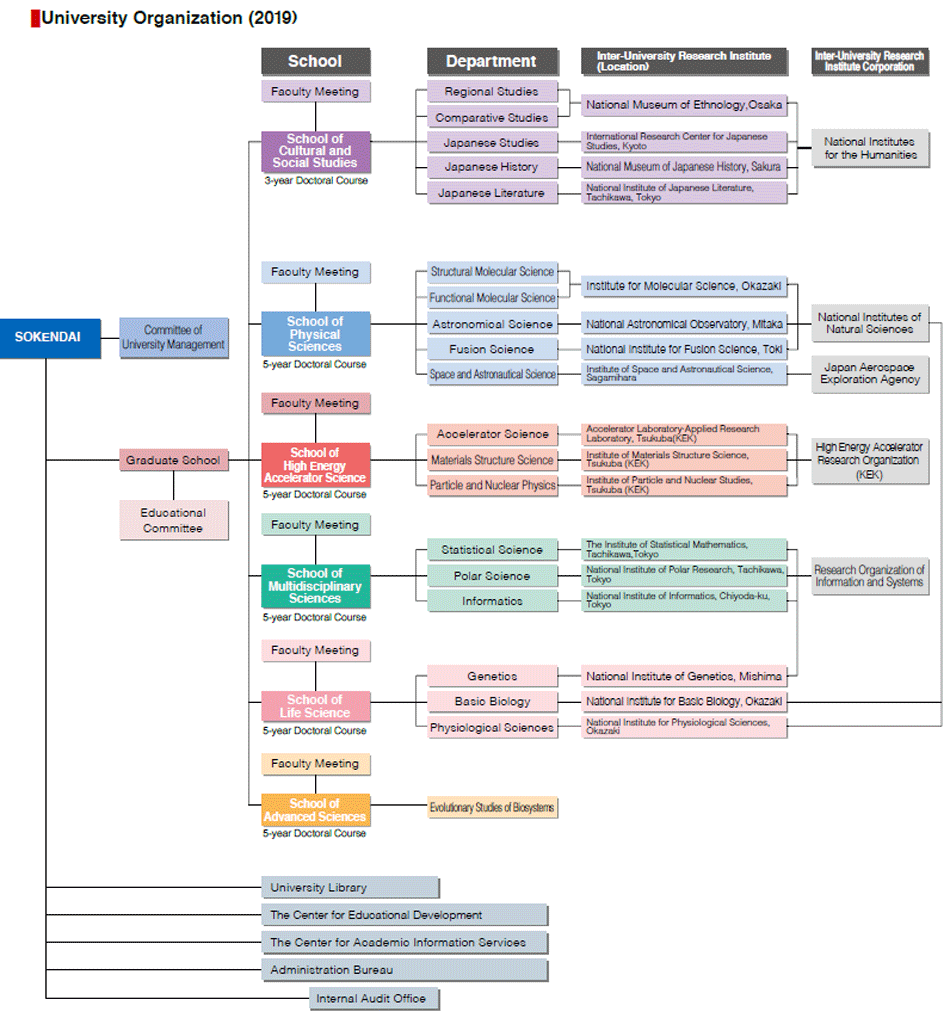Why SOKENDAI?
SOKENDAI is affiliated with various parent institutes (including The Open University of Japan, which has taken over the activities of the National Institute of Multimedia Education), comprising 16 Inter-University Research Institutes operated by the four Inter-University Research Institute Corporations and one research institute of the Japan Aerospace Exploration Agency. SOKENDAI offers both a "dispersed" and an "integrated" research and education system. "Dispersed" refers to discipline-specific research and education carried out at one of the parent institutes; "integrated" to interdisciplinary research and education including disciplines in which the parent institutes specialize.
SOKENDAI's six schools include 20 departments and their attached libraries. SOKENDAI is organized as a distributed training and research system. Apart from the School of Advanced Studies, the other five schools are based at parent institutes at which the students conduct their research.
The School of Advanced Sciences provides training and research opportunities through close ties between the parent institutions and its headquarters in Hayama. Students are based at the School of Advanced Sciences (Shonan International Village, Hayama-cho, Miura-gun, Kanagawa Prefecture, SOKENDAI's headquarters), but work with supervisors at one of the 18 parent institutions throughout Japan. The Center for the Promotion of Integrated Sciences organizes multidisciplinary joint research projects to support comprehensive research and education.
As a parent institution of SOKENDAI, Minpaku offers the following distinctive features.
1. A strong faculty
The faculty outnumbers the student body, and students receive close, detailed supervision from researchers who are top-ranked anthropological fieldworkers.
2. A wealth of resources
Minpaku has Japan's largest collection of ethnological and cultural anthropological materials. These include 660,000 books, 16,000 periodical titles, 340,000 artifacts, and 70,000 audio-video recordings. Students participate in research groups and symposia organized by leading researchers.
3. Ample support
Support includes exemption from tuition, support for fieldwork and presentations at academic meetings.





